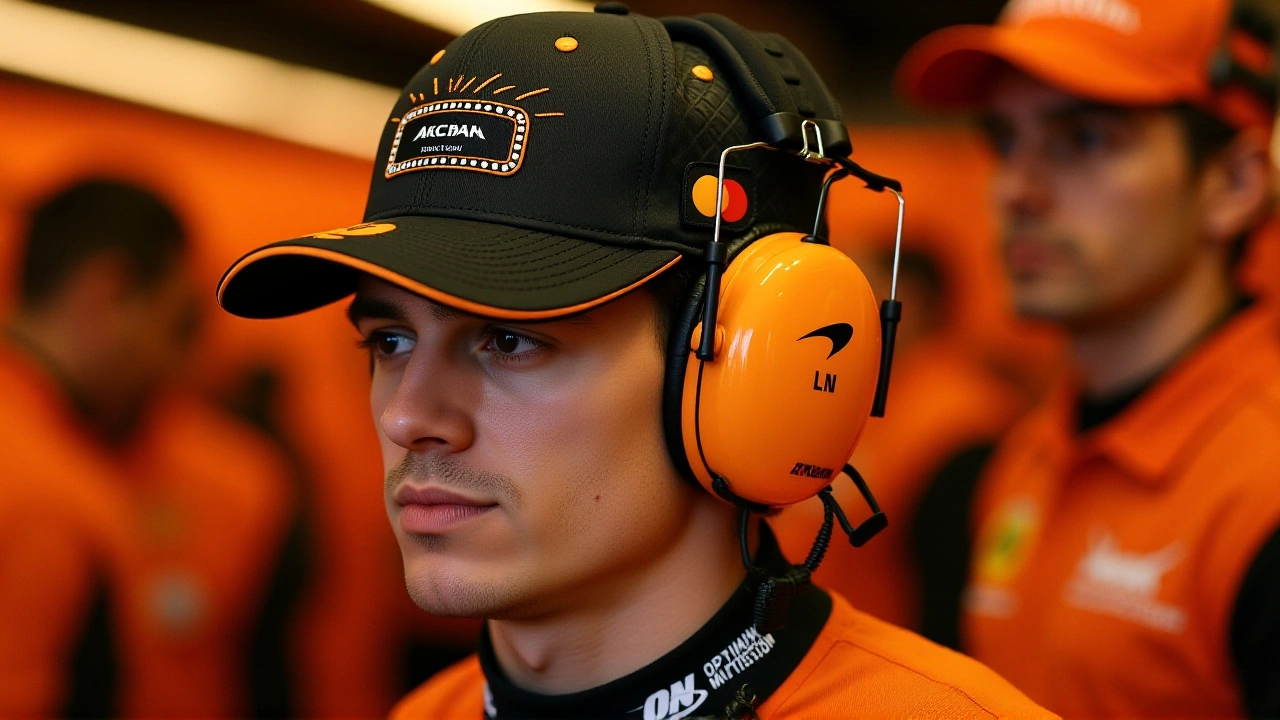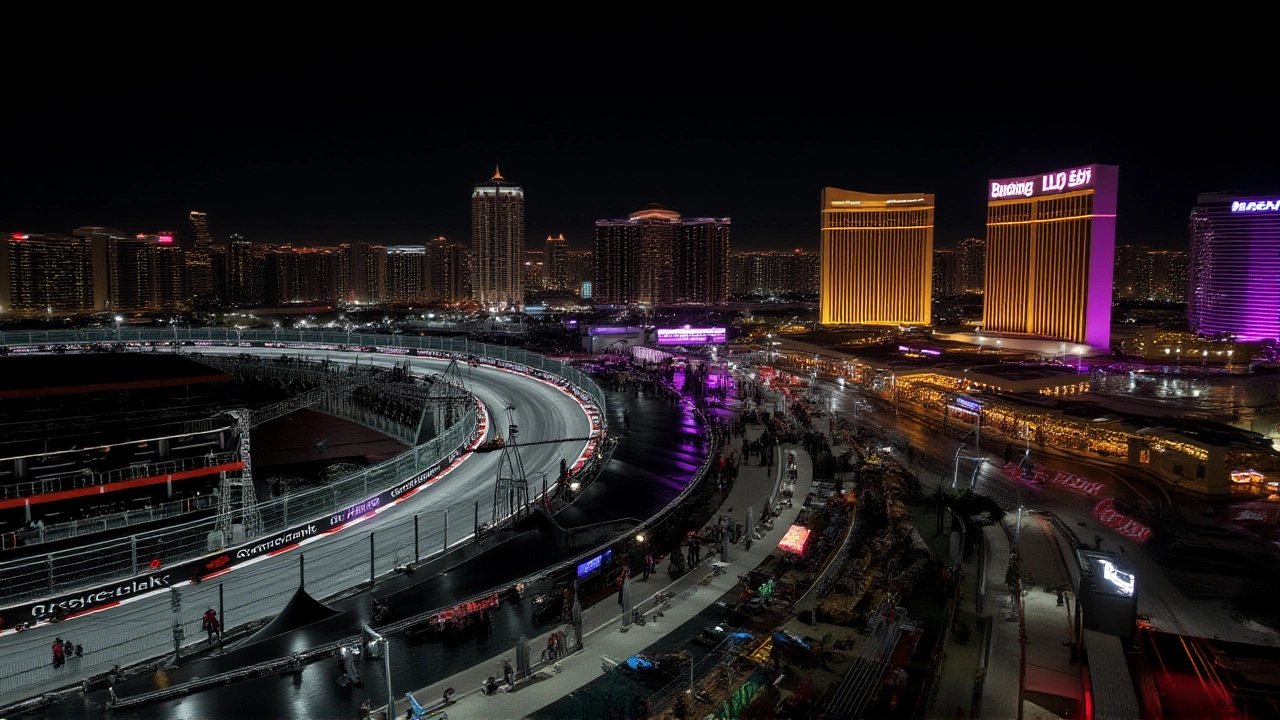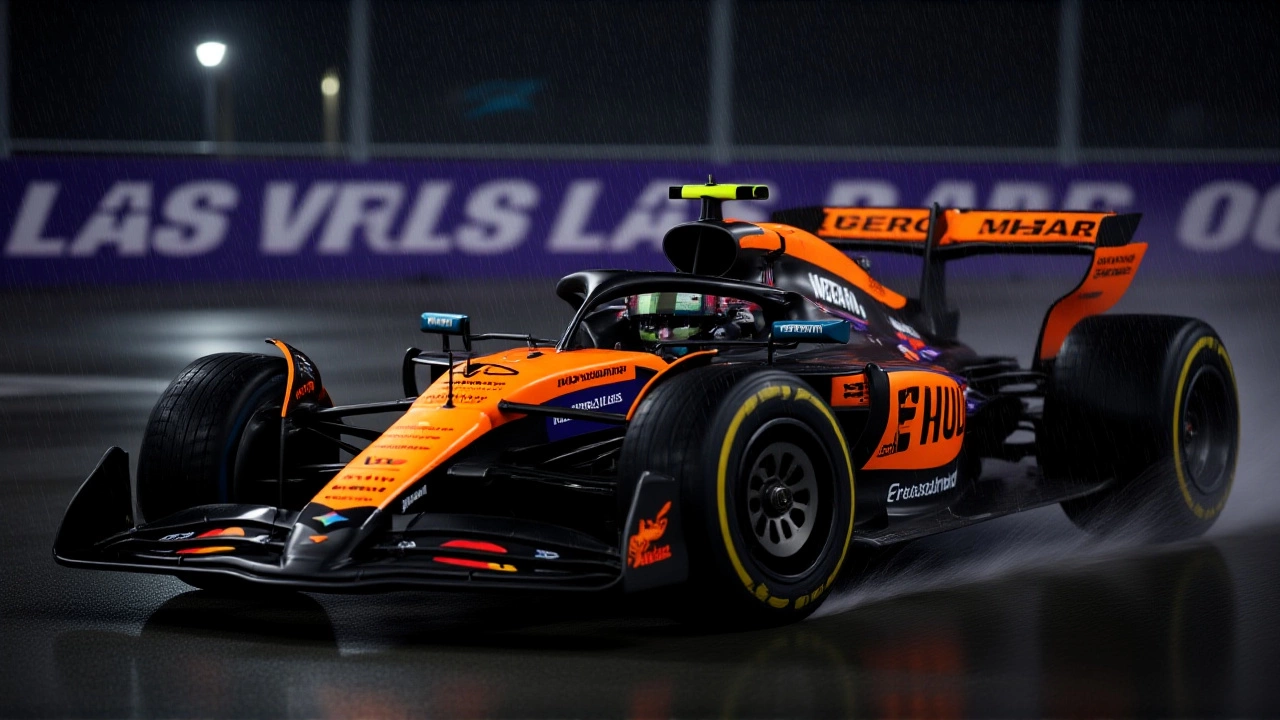The 2025 Formula 1 Las Vegas Grand PrixLas Vegas Strip Circuit ended in chaos — not because of a crash, but because of a rulebook footnote. Lando Norris, the 25-year-old British driver for McLaren Formula 1 Team, stormed to pole position in soaking conditions, clocking a blistering 1:47.934 — just 0.323 seconds ahead of Max Verstappen of Oracle Red Bull Racing. But by Sunday night, Norris wasn’t celebrating. He was staring at a disqualification notice. Both his car and teammate Oscar Piastri’s were stripped of their results after post-race inspection revealed excessive skid block wear. The twist? Verstappen won the race. And suddenly, the championship race just got a lot more interesting.
Wet Qualifying, Wild Chaos
Rain during Free Practice 3 turned the Las Vegas Strip Circuit into a slick, unforgiving mirror. Drivers described it as "incredibly slippery" — a phrase that barely captures the tension. Norris, known for his precision in the wet, nailed his final lap. Verstappen, usually untouchable, slipped wide on Turn 12. Carlos Sainz of Williams Racing snuck into third, just 0.039 seconds behind. George Russell of Mercedes-AMG Petronas Formula One Team was fourth. But the real shock? Lewis Hamilton, the seven-time champion, was eliminated in Q1. He’d start 20th. Even worse, Charles Leclerc of Scuderia Ferrari hit a bollard during Q1 — the metal piece lodged under his SF-25, ruining his final lap. It was his first-ever last-place qualifying in F1.
Verstappen’s Masterclass, Hamilton’s Miracle
When the lights went out Sunday night, Verstappen didn’t waste time. He pulled away cleanly, building a lead that grew like a snowball. By lap 30, he was 15 seconds clear. Russell, in second, held on gamely — but Verstappen crossed the line 23.5 seconds ahead. Kimi Antonelli, the 19-year-old Mercedes rookie, took third, a stunning result for a driver still learning the car. Hamilton, starting from P20, pulled off one of the most remarkable drives of the season. He ran the hard tire early, conserving tires while others burned through mediums. He passed 12 cars — including a late move on Haas’s Esteban Ocon — to finish eighth. "I didn’t think we had a shot," Hamilton said afterward. "But the car felt alive. Like it remembered how to win."
The Disqualification That Changed Everything
Then came the bombshell. Formula1.com confirmed both McLarens failed post-race inspection: their skid blocks — the wooden plates under the car designed to limit ground clearance — had worn beyond the 1mm legal limit. It wasn’t a technicality. It was a violation of the FIA’s safety and performance regulation. Norris had led the Drivers’ Championship with 84 points, 24 ahead of Piastri and 49 ahead of Verstappen. A second-place finish would’ve extended his lead by 15 points, all but locking the title before the final race in Qatar. Instead, he lost all 18 points from his pole position and race result. Piastri, who finished fifth, lost his 10 points too. The McLaren team, which had dominated the first half of the season, suddenly looked vulnerable.

Williams’ Unexpected Windfall
While McLaren collapsed, Williams Racing soared. With Norris and Piastri disqualified, Sainz moved up to fifth — his best finish since Monaco. That pushed Williams to 104 points in the Constructors’ standings, just 11 behind Alpine and 18 ahead of Haas. "All but guaranteeing Williams’ best constructors’ finish since 2017," Motorsport.com wrote. Even Alex Albon, who retired after colliding with Hamilton, had scored enough earlier in the season to keep Williams in fifth. The team’s resurgence, powered by Sainz’s consistency since summer, may end a seven-year drought for top-five honors.
What’s Next: Qatar’s High-Stakes Finale
With Norris now tied at 66 points with Piastri — and Verstappen at 84 — the championship is wide open. Verstappen leads by 18 points. But with 26 points up for grabs in Qatar — 25 for a win, 1 for fastest lap — he’s now mathematically in reach. Norris, who was on the cusp of wrapping it up, now needs to win in Qatar and hope Verstappen finishes lower than fourth. It’s a brutal reversal. "It’s like winning the lottery and then finding out the ticket was torn," one McLaren engineer told reporters. "We did everything right. Then the rules came for us."

Background: Skid Blocks and the Silent Rules
Skid blocks aren’t glamorous. They’re flat, wooden plates bolted under the car to prevent teams from running too low to the ground — which increases downforce and cornering speed. The FIA mandates a minimum wear limit to ensure no team gains an unfair aerodynamic advantage. Teams often push the edge, especially on street circuits like Las Vegas where curbs are brutal. But this time, McLaren’s cars — which had been running unusually low throughout the weekend — crossed the line. It’s not uncommon for cars to be checked after races, but rarely are both teammates disqualified. The last time this happened? 2019, when Racing Point was penalized for illegal brake ducts — but never both drivers from the same team, at the same race, for skid block wear.
What This Means for the Season
The disqualification didn’t just change the standings — it changed the narrative. Norris, once the undisputed favorite, now has to fight like a man with nothing to lose. Verstappen, who’s won 11 races this year, suddenly has a real shot. And Williams? They’re not just surviving — they’re thriving. The FIA’s decision, while harsh, was consistent. But the emotional toll? That’s another story.
Frequently Asked Questions
Why were Norris and Piastri disqualified for skid block wear?
The FIA requires skid blocks — wooden plates under the car — to have at least 1mm of material remaining after a race to prevent teams from running dangerously low for aerodynamic gain. McLaren’s cars were found to have worn beyond that limit, violating technical regulations. Even though the wear may have been caused by aggressive track use, the rules are absolute: if it’s below 1mm, the car is disqualified. This isn’t about punishment — it’s about fairness.
How did the disqualification affect the Drivers’ Championship standings?
Lando Norris lost 18 points (13 for pole, 5 for race finish), dropping from 84 to 66. Oscar Piastri lost 10 points, falling from 60 to 50. Max Verstappen, who won the race, gained 25 points, moving from 59 to 84. That flipped the championship: Verstappen now leads Norris by 18 points with one race left. Norris’s lead, which was nearly unassailable, is now a race-wide deficit.
Why did Williams benefit so much from the disqualification?
With Norris and Piastri removed, Carlos Sainz moved from sixth to fifth — his best result of the season. That gave Williams 104 points in the Constructors’ Championship, pushing them ahead of Haas and within striking distance of Alpine. It’s their best chance at a top-five finish since 2017. Even Alex Albon’s earlier points, despite his retirement, helped solidify their position. Without the disqualification, Williams would’ve finished sixth.
Can Max Verstappen still win the Drivers’ Championship?
Yes — and it’s now realistic. Verstappen leads Norris by 18 points with 26 available in Qatar: 25 for a win, 1 for fastest lap. Norris must win and hope Verstappen finishes fourth or lower. Verstappen only needs to finish fifth or better to clinch the title. With his form this season — 11 wins, 16 podiums — he’s the favorite. The pressure shifts entirely to Norris, who now has to outperform the best driver on the grid.
What caused the skid block wear on the McLarens?
The Las Vegas Strip Circuit has brutal curbs, especially at Turns 1, 12, and 14, where cars frequently ride over them at high speed. McLaren’s 2025 car was designed with a lower ride height for maximum downforce — a setup that worked brilliantly in qualifying but put extreme stress on the skid blocks. Combined with wet conditions forcing drivers to take unconventional lines, the wear was inevitable. The team admitted they pushed the limits, but didn’t expect the FIA to enforce the rule so strictly post-race.
Is this disqualification fair, or was it overly harsh?
From a rules perspective, it’s fair — the FIA has always enforced skid block limits strictly. But emotionally, it’s brutal. Norris and Piastri didn’t cheat; they just pushed the car to its physical limits on a demanding track. Other teams have worn skid blocks below 1mm before and escaped detection. The timing — after the race, with the title on the line — makes it feel like a punishment rather than a regulation. Still, if teams can’t trust the rules, the sport loses credibility. The FIA didn’t bend — and that’s the point.
